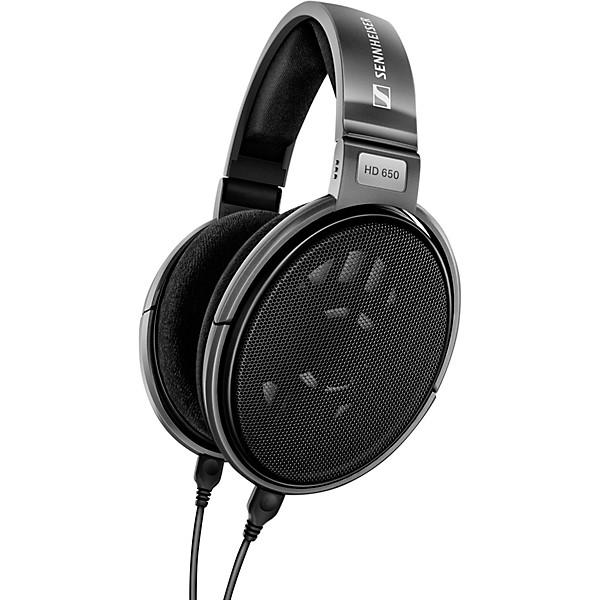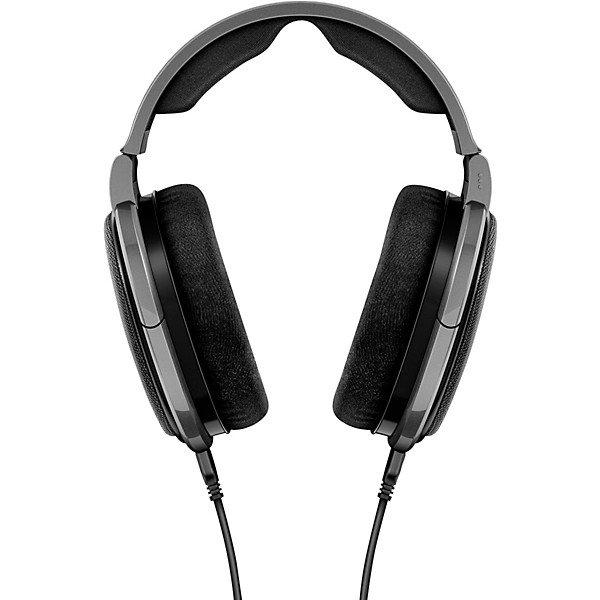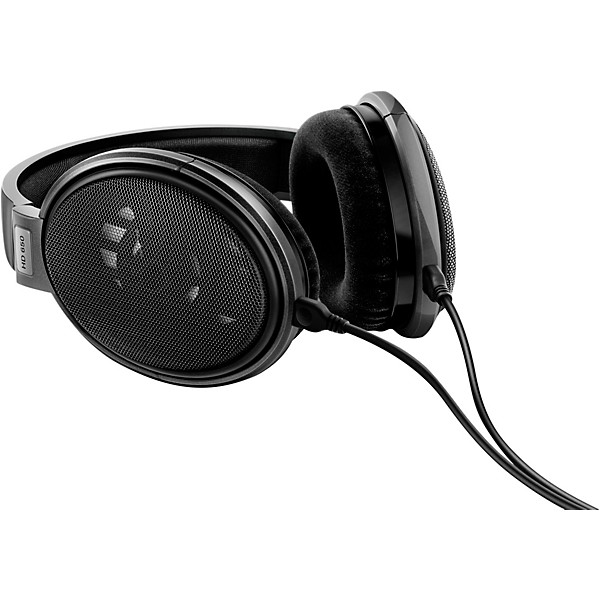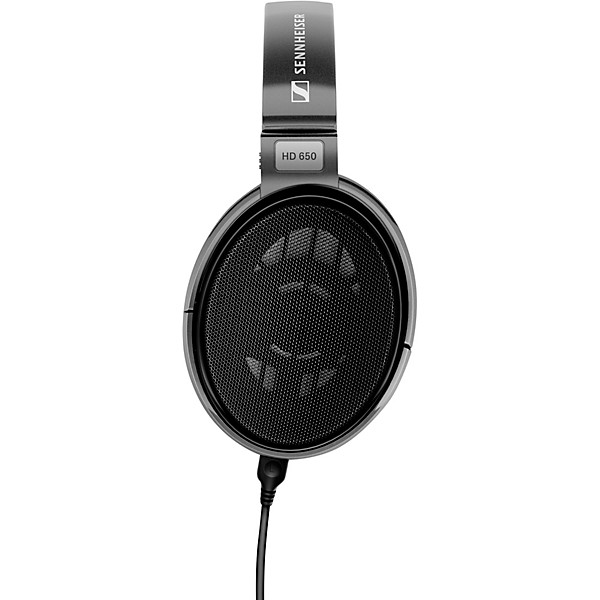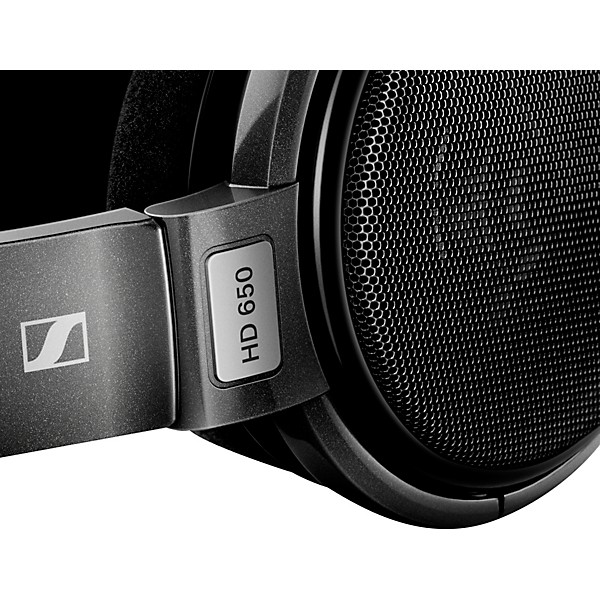- Popular Brands
Sennheiser HD 650 Open-Air Pro Headphones
Videos (1)
View All
Sennheiser HD 650

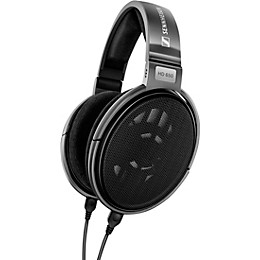
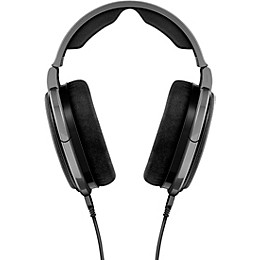
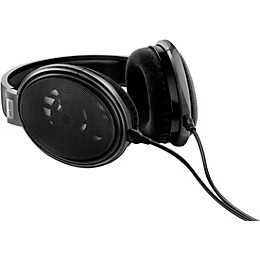
- Selected, matched headphone systems with very tight tolerances (+/- 1dB)
- Optimized magnet systems for minimizing harmonic and intermodulation distortion
- Titanium finish
- Quality metal mesh covers for superb open and transparent sound
- Reinforced, insensitive to handling noise
- Plated 1/4" jack plug with adapter lead to 3.5 mm jack plug
- 1-year warranty
- Nominal impedance 300 Ohm
- Contact pressure ca. 2,5 N
- Weight w/o cable ca. 260g
- Jack plug 6,3/3,5 mm stereo
- Transducer principle (Headphones) open, dynamic
- Ear coupling circumaural
- Cable length 3 m
- Frequency response (headphones) 10.....39500 Hz
- Sound pressure level (SPL) 103 dB (1 Vrms)
- THD, total harmonic distortion 0,05 %
- Glossary
- Nominal impedance
- See impedance.
- Contact pressure
- The wearing comfort of a set of headphones is determined not only by its weight but also by the force with which the earpieces are pressed onto the ears. This force is given in newtons (N), whereby 1 N corresponds to the compressive force which a mass of about 100 g exerts on a solid surface. The DIN Standard 45500 Part 10 limits the maximum permissible contact force to 5 N. Values of between 1.3 and 4 N are common, although lower values apply for open headphones. Higher values can be found in the case of closed headphones. Here, a higher contact pressure is required in order to achieve sufficient sealing, which is important for the reproduction of low frequencies.
- Weight w/o cable
- Jack plug
- A common audio connector in consumer electronics and music industry. Available in various diameters; in the hi-fi segment, 1/8" and 1/4" are widely used. Poles range from one to four. (Examples: headphone jack or jack of an electric guitar).
- Transducer principle (Headphones)
- Ear coupling
- A distinction is made between headphones which are worn on the external ear (supra-aural) and those which surround the ear (circumaural). Open headphones have foam ear pads that rest on the ears or ring pads that surround the ears. Closed headphones, on the other hand, nearly always have circumaural ear pads.
- Cable length
- The cable length is usually measured between the anti-kink sleeves of the cable (cable length without connectors).
- Frequency response (headphones)
- The frequency response of a pair of headphones is given within limits defined by the manufacturer.
- Sound pressure level (SPL)
- Due to the impractical numerical values, the sound pressure is usually given as the logarithmic value of the sound pressure level according to the equation: dB SPL = 20 x log (po / 0.00002 Pa). The abbreviation SPL (sound pressure level) is added in order to make a clear distinction from other uses of dB. The reference sound pressure, which is at the same time the threshold of hearing, is then 0 dB SPL. The threshold of pain is 140 dB SPL. A difference in the sound pressure level of 1 dB is just about perceptible, while a doubling of the sound pressure corresponds to 6 dB and a doubling of the volume corresponds to a rise of 10 dB.
- THD, total harmonic distortion
- Total harmonic distortion is a measure of non-linear harmonic distortion and is given in %. Non-linear harmonic distortions are signals which were not present in the original before the signal was converted by the headphones. These unwanted signals are caused by the diaphragm, whose movements do not precisely move in time with the electric signals that cause it to move. Unfortunately, this is a feature of all electroacoustic transducers. Although it cannot be completely eliminated, suitable steps can be taken to minimise it. However, the user is not interested in why this distortion takes place but in how great the level of distortion must be for it to become perceptible. According to the findings of several research projects, a total harmonic distortion of 1% in the frequency range of 100 to 2000 Hz is imperceptible. Below 100 Hz, the perceptibility threshold lies at 10%
Featured Articles
4.86
7 Reviews
100%
of respondents would recommend this to a friend
- Home Audio3
- Music3
- Relaxing3
- With My Computer2
- Mixing and mastering for a professional working1
- Cord too long1
- Audiophile3
- Gear Head3
- Professional producer/engineer/artist1
- Listening to iPod1
- Comfortable4
- Good Value4
- Great Sound4
- Lightweight3
- Stylish3
Reviewed by 7 customers
What an upgrade from the HD6
Verified Buyer
submitteda year ago
byKyle
fromLaguna beach
Submitted as part of a sweepstakes
Sick.
Don't Sell Yours
submitteda year ago
byChristopher H
fromAsheville
I sold my HD650. Missed the beautiful sound so bought them back. HD650 are best for chilling to music. I could not ask for better. They work OK with a portable DAC/AMP but shine with a good amp. They're not designed for studio work. I have had headphones since the 60s. If I upgrade, I'll buy the HD800S. Don't want to miss out on that great Sennheiser tone!
Awesome Sound
Verified Buyer
submitted2 years ago
byDave
fromNaples, FL
Submitted as part of a sweepstakes
I understand now why the HD 650 are legendary! Love the sound that comes out of these cans and how good the music sounds via a USB DAC attached to my computer.
Top Tier Headphone
Verified Buyer
submitted2 years ago
byBen
fromConnecticut
Submitted as part of a sweepstakes
Very nice reference/mixing headphone. Super open sound, with EQ the bass response complaints people make are completely nullified as well. #sweepstakes
I did buy this product again I have my 2nd pair! Love them!
Verified Buyer
submitted2 years ago
byErica
fromLos Angeles, Ca
Submitted as part of a sweepstakes
This is not for recording and a great alternative for mixing and mastering monitors. I go back and forth between my monitors and these headphones for mixing and mastering.
Doesnt get any better
submitted13 years ago
byJamshaid Mir
fromjersey city nj
These are the best headphones on the market for under 1k. only thing is that they are open, but that is what makes their sound quality superb.
Have a question about this product? Our expert Gear Advisers have the answers.
No results but…
You can be the first to ask a new question.
It may be Answered within 48 hours.

.jpeg)

